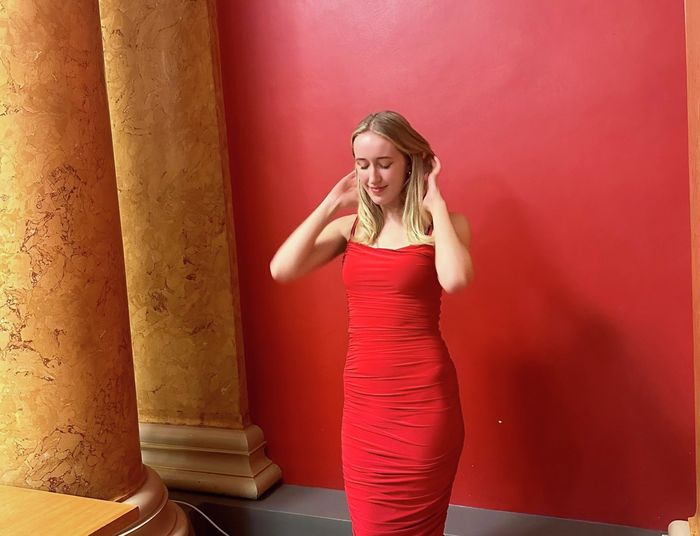I’m guilty of succumbing to the allure of stash. Like most bright-eyed freshers, I spent far too much of my Michaelmas budget last year on my college-branded quarter zip and personalised puffer jacket. Regret may be too strong a word, but let’s just say I was a little overzealous with my investment in this strange uniform.
The stash-police who parole Sidge have some valid criticism: overpricing, environmental impact, and, some argue, a crime against fashion. But Redbird Apparel is a stash company going against the grain in each of these aspects. They produce clothing that is not only ethical and sustainable, but durable, tasteful, and - dare I say - fashionable.
Founded by Laurence Snow and Guy Brown in their final year of university, these products aren’t just freshers’ week souvenirs. Frustrated with the lacklustre options on offer, the complexities of organising bulk orders, and sustainability concerns of the available clothing, the two then-students wanted to produce long-lasting items, carefully designed with sustainability and style in mind. Laurence explains the company’s founding ethos of ‘by students, for students’: “We were in a unique position where we felt that we understood what our customer wanted, because, in a way, we were our customer.”
Redbird takes a three-step approach to sustainability: smart production, smart materials, and eco-conscious delivery. Operating in an industry where garment waste is rampant, and where “40 billion garments made each year are never sold”, they opted for a drop model, producing only what is needed and eliminating almost all textile waste. If mistakes do happen, and items are returned or damaged, the company ensures that “they’re not coming at a cost to the planet” and has partnered with a homeless shelter to donate all unused items, helping to combat the fast fashion trend-based ecosystem.
“Redbird takes a three-step approach to sustainability: smart production, smart materials, and eco-conscious delivery”
As Laurence launches into a discussion of the materials used in their collections, I quickly realise that this isn’t your regular rant about saving the turtles and not using a straw at Pret. The yarn for the popular zip-fleece is made entirely from this recycled plastic, and 40% of the whole college collection is made from 100% recycled yarns: “With the help of students, we’ve saved more than 50,000 one-litre bottles from the dull existence of a landfill.” Laurence acknowledges that the company still has a long way to go in their transition to a fully sustainable collection. “We’re by no means perfect” he tells me, “but I do think that we are better than the rest in our space”. It’s a breath of fresh air to hear these topics discussed transparently, not greenwashed over. Laurence believes that “there is a bigger goal that is more important,” willing to put profitability aside even at times when it’s financially challenging.
Environmental sustainability goes hand-in-hand with ethical labour conditions and worker’s rights throughout the supply chain. Through regular audits and transparent labelling, Redbird ensures that every item adheres to ethical standards: “each item on the website has an ‘about me’ section,” Laurence tells me, which allows students to understand the accreditation and ethical practices behind the products. “Almost all are either BSCI monitored by BSCI initiative, or RAP certified, and in line with global recycled standards” he reveals, referring to the Business Social Compliance Initiative standard, a recognised social accountability standard that ensures ethical compliance across the supply chain.
We touch on the company’s most recent rebrand initiatives, such as ‘Cap for a Cause’, where Redbird has partnered with the Bihar trust, a charity working to improve access to and quality of education of children in Nepal. With the purchase of each cap, one of the most popular items on offer, a proportion of profits will be donated to provide school uniforms in the Nepal school.
“Stash is an integral part of Cambridge – its role extends beyond a warm layer or comfy jumper”
With my generic school leavers’ jumper collecting dust at the back of my wardrobe, I’m curious to hear how Redbird differentiates their products to prevent them from fading into the ocean of sameness that drowns most stash. Laurence explains that the company has hired an in-house designer for their new Signature Collection, to work with committee members and create custom pieces. All designs are voted on by members of the society, to create unique items that resonate with them. “Clothes tell a story about who we are, where we’re going, and also the impression we give the world…that couldn’t be more true for university clothing.” Stash is an integral part of Cambridge – its role extends beyond a warm layer or comfy jumper. “Stash is one way for the societies to tell their stories to the world,” Laurence emphasises. It forms part of our identity, an extension of the activities we partake in, the societies we belong to, and the people with whom we surround ourselves.
But materials and design aren’t the only things the company is selective with. Committees must apply for stash in a careful process: “The goal in the immediate future is to become quite selective about who we decide to work with.” Laurence tells me of how they conduct “a vibe check” of a society’s Instagram to gain an understanding of their projects and how they can be a good collaborative partner. “Look at it from a point of view of, not who’s going to be profitable, but whose ethos do we resonate with.” I can’t help but feel that applying for the stash drop is reminiscent of applying for university. No doubt Cambridge students are well-accustomed to this sort of selective process: for a society, your ethos is your personal statement, and Instagram is your interview.
When someone buys a garment, it’s impossible to guarantee that it may not be cast aside and never worn again. However, what a company can do is ensure that they’re “creating garments that are built to last and built with sustainability in mind”. Beyond the various student style tropes that exist at university, stash is undoubtedly the ultimate Cambridge aesthetic. Redbird affirms that even after three years of studying, these garments needn’t become obsolete, and we needn’t lose the pieces of ourselves that we gain in university life. Redbird Apparel create items that “each time you reach for them, a little story unfurls, a memory that you had at university, that gives you an attachment to the piece.”


